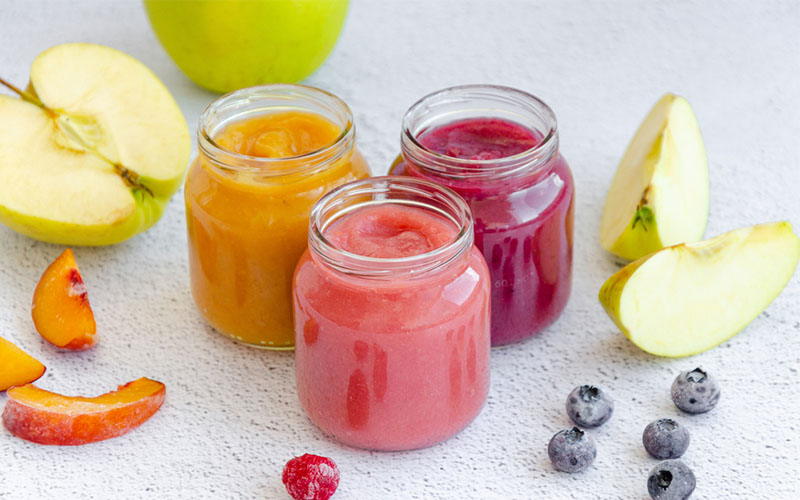Fruit Puree in Iran
Fruit puree refers to a smooth, thick, and pulpy mixture made by blending or processing fruits until they reach a smooth consistency. It is made by crushing or pureeing fresh or cooked fruit, often with the addition of a small amount of liquid, such as water or juice, to achieve the desired texture.
Fruit purees can be made from a variety of fruits, including berries, apples, bananas, peaches, mangoes, and more. They are commonly used in the food industry as ingredients in various recipes, including desserts, sauces, baby food, smoothies, and baked goods. Fruit purees can also be enjoyed on their own as a healthy and natural snack.
One of the advantages of fruit puree is that it retains the natural flavor and nutritional content of the fruit, including vitamins, minerals, and dietary fiber. It can be used as a substitute for fresh or frozen fruit in recipes, especially when the fruit is out of season or not readily available.
Fruit purees can also be used as a natural sweetener or flavor enhancer in dishes, reducing the need for additional sugar or artificial additives. Some people use fruit purees as a healthier alternative to traditional jams or spreads.
It’s worth noting that commercially available fruit purees may sometimes contain added sugars or preservatives, so it’s important to read the product labels if you’re looking for a pure fruit puree without any additives. Alternatively, you can make your own fruit puree at home by blending fresh or cooked fruits until smooth, without the need for any additional ingredients.
– Fruit puree is made by blending or sieving cooked fruit until it forms a thick, smooth paste or liquid. It has a finer texture than fruit sauce or jam.
– Common fruits made into purees include apples, peaches, pears, mangoes, berries, etc. Tropical fruits like banana and papaya are also often pureed.
– Fruit puree retains more of the fruit’s natural fiber and nutrients compared to fruit juice since the fruit is blended with its skin and seeds.
– It can be used as a replacement for fresh fruit in recipes where chunks may not be desired, like in baking goods, yogurt, ice cream, baby food, etc.
– Texture depends on the cooking and blending process but purees are generally thicker than fruit juice yet smoother than fruit sauce or jam.
– Purees are shelf-stable and can be refrigerated for 1-2 weeks or frozen for 6-12 months. Commonly found in aseptic packaging for long-term storage.
– Ingredients usually include just the fruit and sometimes lemon juice, light sweetener or water for balance. No extra thickeners are needed.
– Offers convenience of using fruit anytime without peeling or chopping fresh. Consistent flavor and texture year-round.
– Higher in nutrients than fruit juice but may have slightly reduced vitamins through the cooking process.
So in summary, fruit puree is a smooth, thickened fruit mixture retaining fiber and nutrients from the whole fruit.


